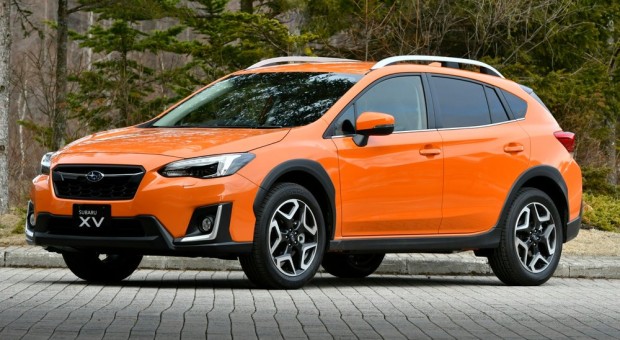
With gas prices fluctuating, improving fuel efficiency is a top priority for many drivers. Fortunately, you don’t need a hybrid or electric vehicle to maximize miles per gallon. Small changes in driving habits, maintenance routines, and even vehicle upgrades can make a big difference. In this article, we’ll share practical and effective ways to boost your car’s fuel economy, helping you save money at the pump and reduce your environmental footprint.
1. Drive Smoothly and Avoid Hard Braking
Aggressive driving, including rapid acceleration and hard braking, wastes fuel and puts unnecessary wear on your vehicle. Smooth and steady driving allows your car to operate more efficiently.
Tip: To improve fuel economy, anticipate traffic conditions to avoid sudden stops. Gradual acceleration and coasting when possible can improve fuel efficiency by up to 30% on the highway and 10% in the city.
2. Maintain Proper Tire Pressure
Underinflated tires create more rolling resistance, which forces the engine to work harder and consume more fuel. Checking and maintaining proper tire pressure is one of the easiest and most effective ways to improve fuel efficiency.
Tip: Check your tire pressure monthly and ensure it matches the recommendations in your owner’s manual or on the sticker inside the driver’s door. Properly inflated tires not only improve fuel economy but also enhance handling and safety.
3. Reduce Excess Weight in Your Car
Carrying unnecessary weight, especially in the trunk or backseat, forces the engine to use more energy. Every 100 pounds of extra weight can reduce your fuel economy by about 1%.
Tip: Regularly clean out your trunk and backseat to remove heavy items you don’t need. Avoid roof racks or cargo carriers if you’re not using them—they create drag that can further decrease fuel efficiency.
4. Use Cruise Control on Highways
Using cruise control helps maintain a steady speed, which can improve fuel efficiency on long highway drives. By reducing the need for constant acceleration and deceleration, cruise control can help your car achieve better mileage.
Tip: Set your cruise control at or slightly below the speed limit to optimize fuel savings. Just remember to disable it on hilly roads, as cruise control can increase fuel consumption when adjusting for steep inclines.
5. Keep Up with Regular Maintenance
Regular vehicle maintenance, including oil changes, air filter replacements, and spark plug checks, ensures that your car’s engine runs efficiently. A well-maintained engine burns fuel more cleanly and can prevent issues that lead to wasted fuel.
Tip: Follow the maintenance schedule in your owner’s manual. Replacing a dirty air filter, for example, can improve fuel efficiency by up to 10% and boost your car’s acceleration. Regular tune-ups also help maintain peak performance and fuel economy.
6. Plan Your Routes and Combine Trips
Multiple short trips from a cold start consume more fuel than a single longer trip. By planning routes efficiently and combining errands into one trip, you can reduce the overall fuel used and the number of cold starts, which are less fuel-efficient.
Tip: Use apps like Google Maps or Waze to find the shortest routes and avoid heavy traffic, which can lead to fuel-wasting stop-and-go driving. Combining errands into one trip can save both time and fuel.
7. Use Air Conditioning Wisely
Running the air conditioning puts extra load on the engine, reducing fuel efficiency. On hot days, using the A/C at high speeds is more efficient than opening windows, which creates aerodynamic drag. However, in cooler weather, try to minimize A/C usage.
Tip: Use the A/C sparingly at low speeds, and opt for open windows when driving around town if it’s comfortable. At highway speeds, it’s better to use the A/C than open windows to maintain fuel efficiency.
8. Switch to Fuel-Efficient Motor Oil
Using the manufacturer-recommended oil viscosity for your engine ensures optimal performance and can help improve fuel efficiency. Some motor oils are labeled as “energy conserving” and contain additives that reduce friction, helping the engine run more smoothly.
Tip: Check your owner’s manual for the recommended oil type and consider using synthetic oil, which can further improve fuel economy and engine longevity. Using the right oil can improve mileage by up to 2%.
9. Avoid Idling
Idling wastes fuel without moving the car, and it’s a habit many people don’t realize impacts their fuel economy. Modern engines are efficient enough that restarting the car uses less fuel than idling for more than a minute.
Tip: If you’re waiting for someone or stuck in a line for a long period, turn off your engine. Many newer cars have “stop-start” systems that do this automatically to save fuel.
10. Consider Aerodynamic Upgrades
Your car’s aerodynamics affect how efficiently it moves through the air, impacting fuel economy. Removing roof racks or bike carriers when not in use, and even installing aero kits, can reduce drag.
Tip: If you frequently drive on highways, consider adding aerodynamic modifications like a front air dam, side skirts, or a rear spoiler. While these upgrades may have a small impact on fuel efficiency, they can add up over time if you’re a frequent highway driver.
11. Use Premium Fuel Only If Required
Many people mistakenly believe that premium fuel improves performance in all cars, but most vehicles are designed to run efficiently on regular fuel. Using premium fuel when it’s not required doesn’t increase fuel efficiency and only adds to your gas bill.
Tip: Check your owner’s manual to see if your car requires premium fuel. If it doesn’t, stick to regular. Unless you drive a high-performance or luxury vehicle, you’re unlikely to see any benefits from premium fuel.
Improving your car’s fuel efficiency doesn’t require drastic changes or expensive upgrades. Small tweaks to your driving habits and regular maintenance can make a big difference in how much you spend at the pump. Not only will these changes help you save money, but they’ll also reduce your carbon footprint, making every mile you drive a little greener.
















